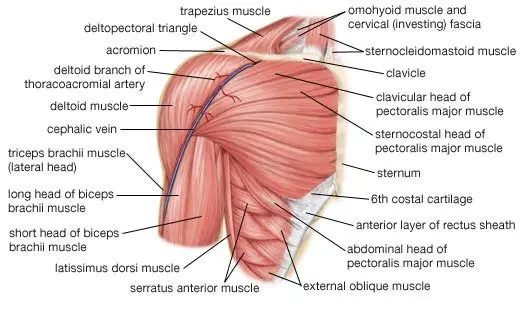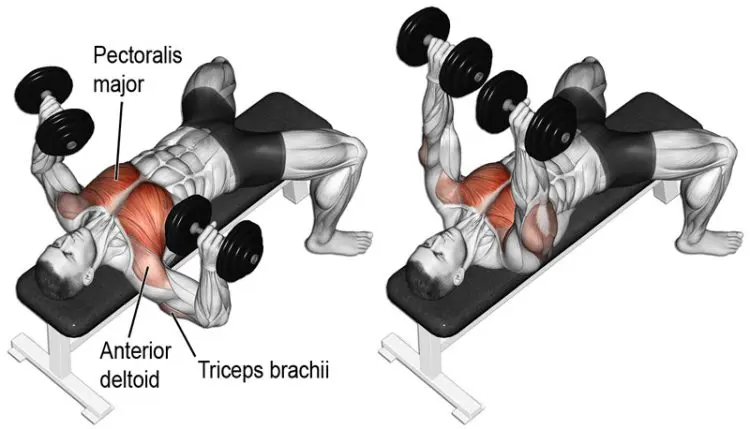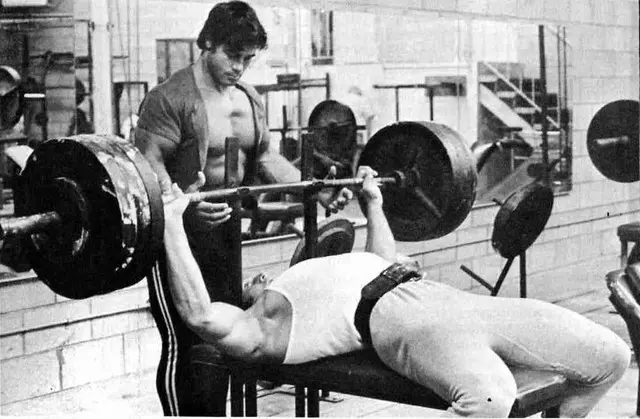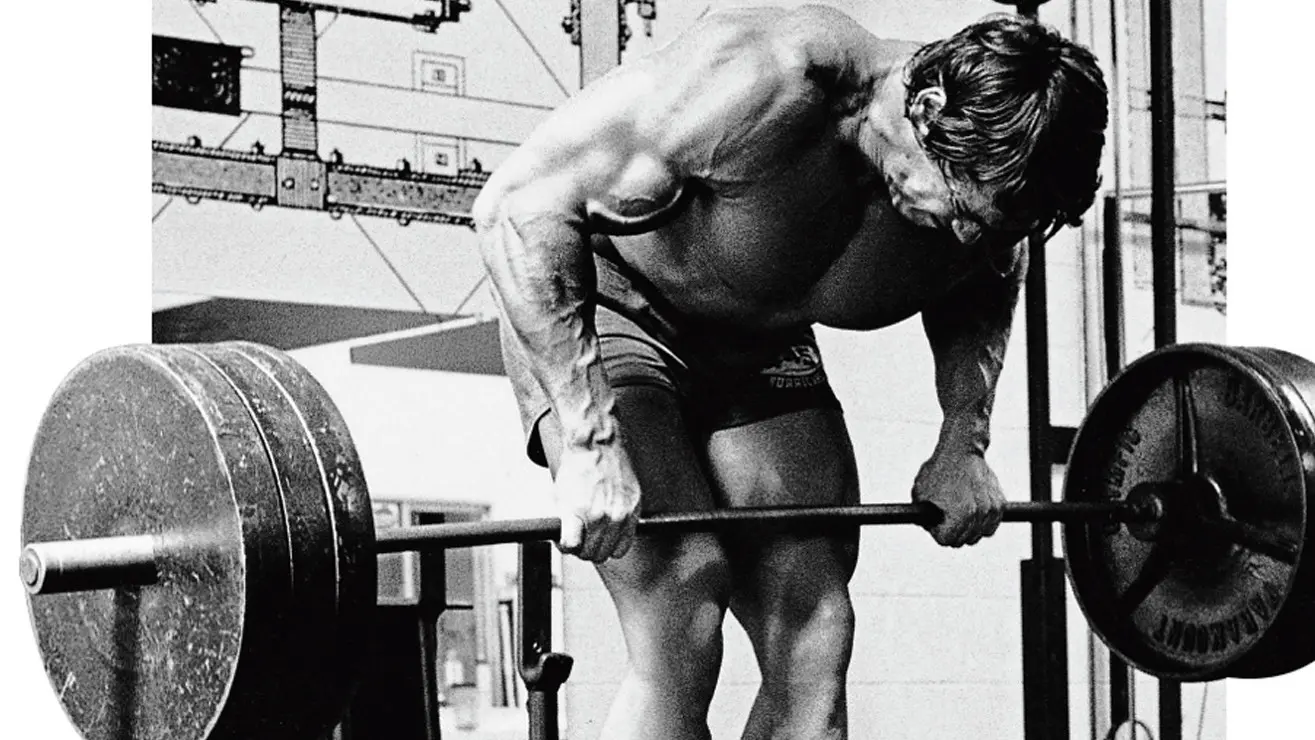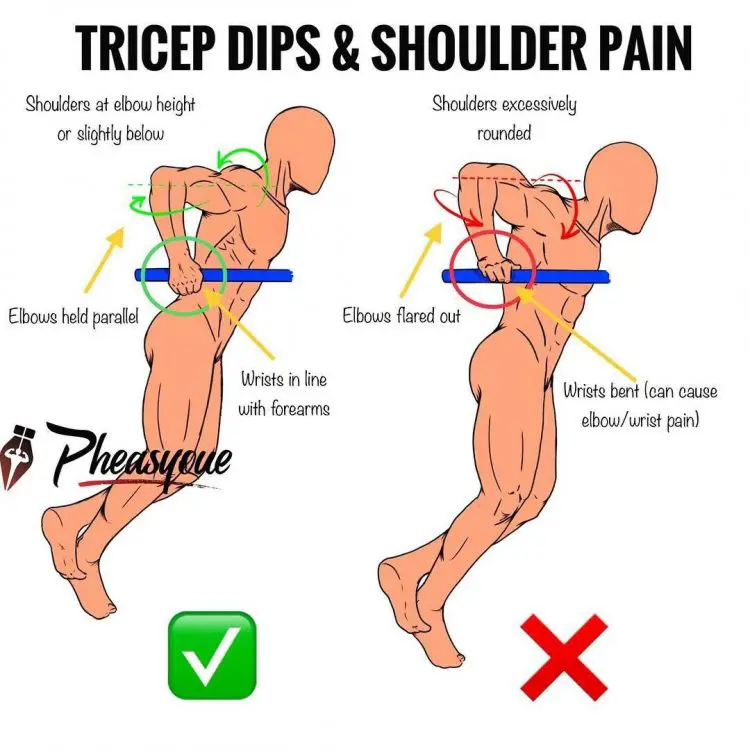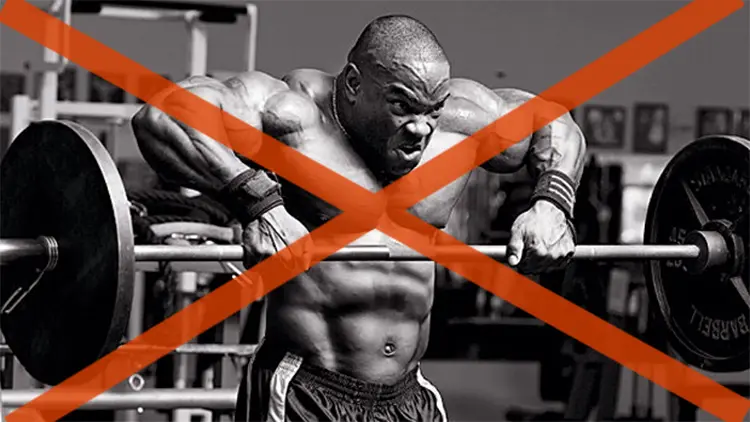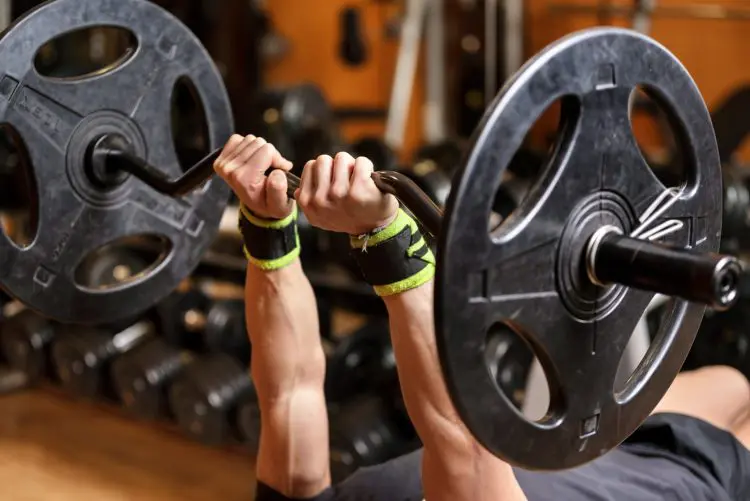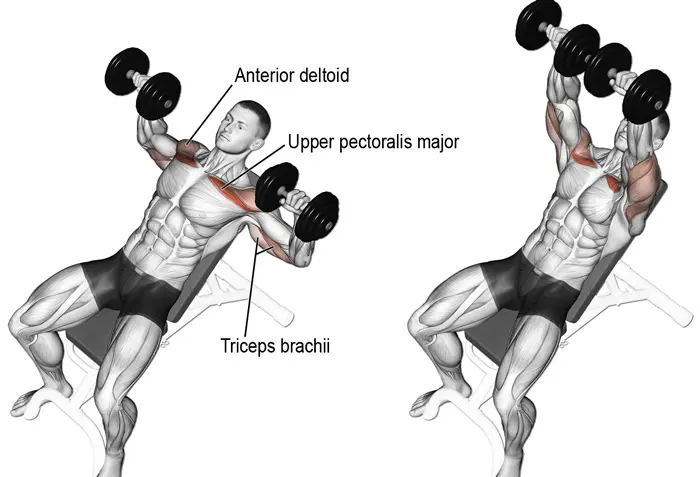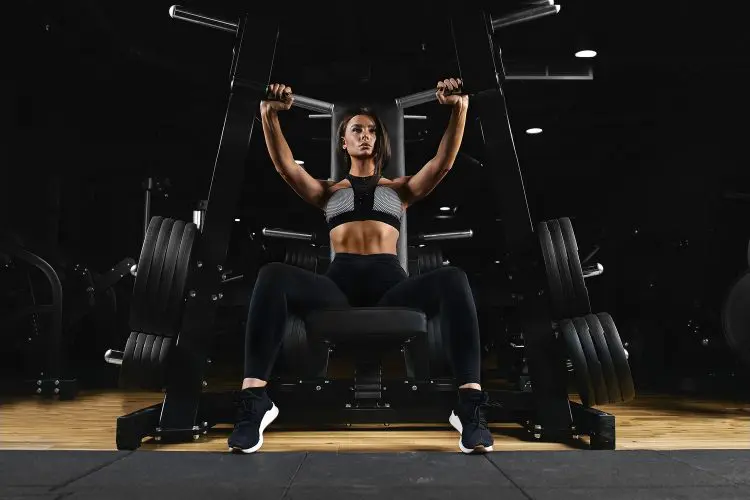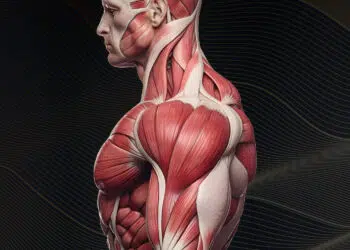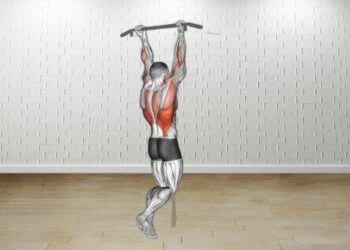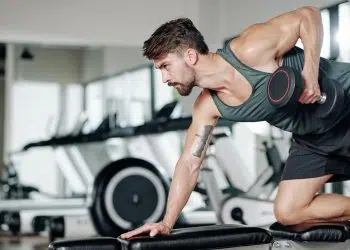The shoulders are an amazing body part. They have huge size and strength potential, and the shoulder joint itself is more mobile and capable of more movements than any other joint in the human body.
The shoulder muscles and joints are also incredibly hardworking. They’re involved in every upper body compound exercise you do and are heavily involved in plenty of lower body and full-body exercises, too, such as front and back squats, high-pulls, and kettlebell swings.
A lot of lifters suffer from shoulder pain, and that pain can be anything from mildly annoying to severe and debilitating. In this article, we’re going to delve into some of the causes of shoulder pain and provide you with 13 practical ways to avoid it.
Shoulder Anatomy Basics
The shoulder is a ball and socket joint that is made up of your humerus and your scapula. The head of the humerus sits in a shallow socket called the acetabulum. Ball and socket joints are capable of lots of different movements which means it is inherently unstable. Joint instability is one of the reasons that the shoulder joint is so susceptible to injury.
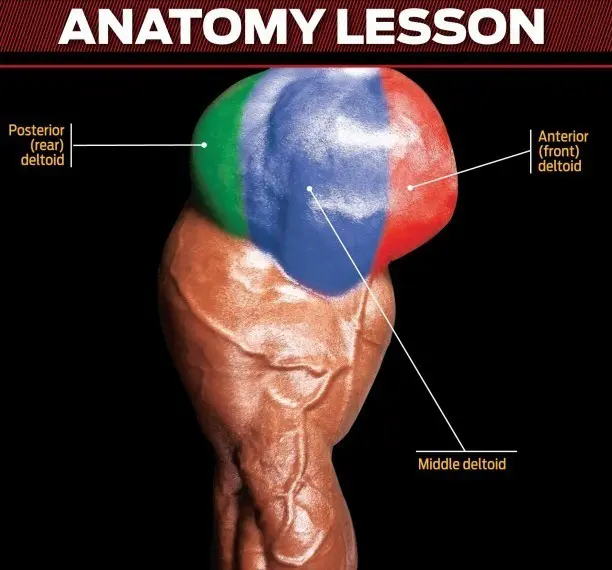
The articulations of the shoulder joint are:
Level Up Your Fitness: Join our 💪 strong community in Fitness Volt Newsletter. Get daily inspiration, expert-backed workouts, nutrition tips, the latest in strength sports, and the support you need to reach your goals. Subscribe for free!
- Flexion – moving your arm forward
- Extension – moving your arm backward
- Horizontal flexion – moving your raised arm forward
- Horizontal extension – moving your raised arm backward
- Abduction – lifting your arm out and away from your side
- Adduction – lowering your arm back down to your side
- Medial rotation – turning your shoulder inward
- Lateral rotation – turning your shoulder outward
- Circumduction – circling your arm
Shoulder pain is not limited to the shoulder joint. The shoulder girdle can also be a source of pain. The shoulder girdle is comprised of your scapulae and your clavicles. Its movements are:
- Elevation – shrugging your shoulders upward
- Depression – pulling your shoulders downward
- Protraction – pushing your shoulders forward
- Retraction – pulling your shoulders back
All of these movements mean that the shoulders are affected by a whole lot of muscles. The main muscles that are responsible for controlling your shoulder joint and girdle are:
- Anterior deltoids – shoulder joint flexion, horizontal flexion, and medial rotation
- Medial deltoids – shoulder joint abduction
- Posterior deltoids – shoulder joint extension, horizontal extension, lateral rotation
- Pectoralis major – shoulder joint horizontal flexion, adduction, medial rotation
- Latissimus dorsi – shoulder joint extension, adduction, medial rotation
- Biceps brachii – shoulder joint flexion
- Triceps brachii – shoulder joint extension
- *Supraspinatus – shoulder joint abduction and stabilization
- *Infraspinatus – shoulder joint external rotation and stabilization
- *Teres minor – shoulder joint external rotation, adduction, and stabilization
- *Subscapularis – shoulder joint internal rotation and stabilization
- Upper trapezius – shoulder girdle elevation
- Middle trapezius – shoulder girdle retraction
- Lower trapezius – shoulder girdle depression
- Rhomboids – shoulder girdle retraction
*Collectively called the rotator cuff.
It is not the aim of this article to identify the cause or nature of existing shoulder pain. That’s a job for a qualified medical professional. However, some of the conditions that we hope to help you avoid include:
Strains and sprains – strains affect the muscles while sprains affect the ligaments.
Osteoarthritis – wear and tear of the hyaline articular cartilage within the shoulder joint
Bone spurs – irregular bone growth within the shoulder joint
Bursitis – inflammation of the fluid-filled sacks that cushion your shoulder joints
Rotator cuff injuries – typically caused by overuse, weakness, or over-stretching
Labrum tears – torn cartilage
Tendonitis – inflamed, swollen tendons
Tendonosis – degeneration of the tendons
Impingement – pinching of tendons between bones
Frozen shoulder – typically caused by adhesions within the shoulder capsule
13 Ways to Avoid Shoulder Pain in The Gym
With so much to go wrong with your shoulders, it goes without saying that preventing shoulder pain is better than trying to cure it. To that end, here are 13 strategies for avoiding painful shoulders.
You could also use these methods to train through very mild shoulder pain and stop it from getting worse. However, if your shoulder pain persists or worsens, you should stop training and get it checked out by a qualified medical professional, preferably one who specializes in sports injuries.
1. Swap from barbells to dumbbells for your pressing workouts
Barbells force you into a fixed movement path. Also, your hands are locked into a pronated (palms down) position, both of which can put a lot of stress on your shoulders. A lot of lifters find dumbbell bench presses and overhead presses more shoulder-friendly than their barbell equivalents.
Using dumbbells means your hands are free to rotate, which can help take stress off your shoulders, and you aren’t locked into such a repetitive movement, which can help cut down on overuse injuries like tendonitis.
2. Watch your range of motion
A common mantra with many fitness professionals is that you should always lift using a full range of motion. However, such well-meaning advice can also lead to shoulder pain. If you have long arms, lowering a barbell or dumbbells all the way down to your chest during bench presses can lead to hyperextension of your shoulder joints, which is a common source of pain.
Avoid this problem by stopping the bar 2-3 inches above your chest. You can also do board presses, where you lay a block on your chest to reduce your range of motion or swap to floor presses.
3. Pull more than you push
A lot of shoulder problems are caused by doing too many pushing exercises and too few pulling exercises. This creates an imbalance that affects the position and function of the shoulder joint.
This problem is easy to avoid. Study your training diary/program and count up your upper body pulling and pushing exercises. You should be doing at least as many sets of pulling are you are pushing. Better yet, pull more than you push.
One easy way to do this is to do push/pull supersets, e.g.:
4. Drop the dips
Dips are a popular and effective chest and triceps exercise, but they can also be a source of shoulder pain for some lifters.
Dips invariably involve a lot of shoulder extension. Seated bench dips are even worse for your shoulders as, with less weight to lift, exercisers tend to descend even deeper.
If you can’t quit dips, take care not to descend so far that your shoulders are hyperextended. Stop with your elbows are bent to 90-degrees. Better yet, replace dips with something more shoulder-friendly, such as decline barbell or narrow grip bench presses.
5. No more upright rows
Like dips, upright rows are an effective exercise that is also a common source of shoulder pain. With upright rows, your shoulder joints are medially rotated and compressed at the same time, putting a lot of stress on the articular surfaces and rotator cuff.
Level Up Your Fitness: Join our 💪 strong community in Fitness Volt Newsletter. Get daily inspiration, expert-backed workouts, nutrition tips, the latest in strength sports, and the support you need to reach your goals. Subscribe for free!
Upright rows work your upper traps and deltoids, both of which can be trained using safer, more shoulder-friendly exercises like shrugs and overhead presses. If you must do upright rows, try using dumbbells, which are a lot more shoulder-friendly.
6. Avoid behind the neck movements
Behind the neck presses, pulldowns and pull-ups offer no real advantage over the in front of the neck versions but are much harder on your shoulders, especially if you have tight pecs or poor posture.
In fact, if you look at a lot of exercisers when they do behind the neck movements, you’ll quickly see that they are actually pushing their heads forward and not pulling the bar backward so it reaches the back of their necks. Rather than doing behind the neck movements, they’re doing forward head movements instead!
Some lifters can get away with behind the neck training and suffer no ill-effects. But there is no way to know you are one of them. Avoid the risk of shoulder pain by skipping behind the neck exercises.
For some, this may even mean quitting low bar back squats, which are very hard on the shoulders and doing high bar or safety squats instead.
7. Don’t neglect your rotator cuff
The muscles of the rotator cuff work with your larger muscles to control the various movements of your shoulder joint but are important shoulder joint stabilizers too. They prevent the extraneous movement that could otherwise cause wear and tear injuries and pain.
The rotator cuff is an important muscle group, and while it won’t directly make your shoulders bigger, strengthening these muscles will help keep your shoulder joints in good working order.
Include some isolated rotator cuff exercises in your upper body workouts to keep these muscles healthy. Typically done using resistance bands, these aren’t hard exercises but are none the less very valuable.
Read more about this critical muscle group in this in-depth article, including exercises for developing your rotator cuff.
8. Stabilize your shoulder girdle
One of the best ways to avoid shoulder pain is to always give your shoulder joints a stable platform from which to work. That’s why, in almost every exercise description on Fitness Volt, you’ll see instructions telling you to pull your shoulders down and back.
It doesn’t matter what exercises you are doing, from push-ups to pulldowns to biceps curls, pulling your shoulders down and back helps take the stress off your joints.
Make sure that, before any exercise, you set your scapula and pull your shoulders down and back. Then, make sure you keep them there for the entire duration of your set.
This, like abdominal bracing, can take a little practice, and, at first, you’ll probably need to think about it. But, the more often you do it, the more automatic it will become. In time, pulling your shoulders down and back will just be something you do whenever you work out.
9. Mobilize your thoracic spine
Your spine is made up of several different sections, with the main ones being:
- Lumbar spine – lower back
- Thoracic spine – upper back
- Cervical spine – neck
The thoracic spine is vital for shoulder health because it affects your upper body posture and your ability to raise your arms overhead without hyperextending your shoulders. For example, during overhead presses, if you can’t extend your thoracic spine correctly, you’ll probably hyperextend your shoulders instead. Needless to say, this will put more stress on your shoulder joints.
One effective way to restore T-spine mobility is to use a foam roller.
Lie on your back with a foam roller behind your upper back. Place your feet on the floor, knees bent. Try not to hyperextend your lumbar spine. Support the weight of your head with your arms, but do not pull on your neck.
Slowly move the roller a little further down your mid-back and extend your T-spine over it. You may hear a few pops and cracks as you do this. That’s your T-spine moving back into correct alignment. Lift your head and then extend your spine again. You should find your range of motion increases rep by rep.
After you’ve done 3-5 reps, move down the roller a couple of inches and repeat on the next segment of your T-spine. Stop when you reach your lumbar spine; rolling and hyperextending your lumbar spine could lead to injury.
10. Narrow your grip
Wide grip bench presses, push-ups, pull-ups, lat pulldowns, and overhead presses put your shoulders into a biomechanically disadvantageous position, placing more stress on your fragile shoulder joints.
Adopting a narrower grip can help take the stress off your shoulders. Don’t interpret this to mean that your thumbs should be touching; that’s not what we mean. Instead, your hands should be shoulder-width apart or slightly wider, rather than out at the end of your barbell or pulldown handle.
And, for the record, ultra-wide grip pulldowns and pull-ups won’t “make your lats wider.” Instead, they reduce your range of motion, which will make your workout less effective.
11. Stretch your pecs and lats
In the same way that poor T-spine mobility can interfere with proper shoulder mechanics, so too will tight lats and pecs. The good news is these muscles are easy to stretch. With adequate flexibility, you should find that you can do overhead presses and pulldowns much more comfortably and with far less shoulder pain.
To stretch your pecs, stand in an open doorway with your forearms on the vertical frames, elbows level with your shoulders. Using a staggered stance for balance, push your chest gently through your arms to stretch your pecs as well as your anterior deltoids.
To stretch your lats, sit on the floor with your legs crossed or sit on a stable chair. Reach your left arm up overhead and then lean to the right to feel a pleasant stretch in your left lat and waist muscles. Hold for 20-30 seconds and then switch sides. This stretch can also be done while standing.
12. Switch from overhead presses to a high incline
As much as we LOVE overhead presses, they are an avoidable source of shoulder pain for some lifters. If you lack T-spine mobility, both seated upright and standing overhead presses can lead to shoulder hyperextension.
Take stress off your shoulders and keep on pressing by doing your overhead presses on a high incline bench. This allows you to lean back just enough to protect your shoulders without reducing the effect of the exercise you are doing. Set your vertical bench back just 10-15 degrees to make overhead presses much more shoulder-friendly.
13. Take care on strength training machines
Strength training machines are often viewed as safer than free weights. That’s because they’re easy to learn, and you are much less likely to get pinned under a heavy weight if you fail to complete a rep.
But strength training machines can be a source of shoulder pain too. They are designed to fit average-sized users and only offer a limited number of adjustments. Machines also lock you into a fixed movement pattern. This means you may find yourself trying to use a machine that just doesn’t fit you properly, and that places your joints in a potentially injury-causing position.
Take care using strength training machines. If you feel like you are being forced into an unnatural position, switch to cables or free weights instead, which are usually much more accommodating.
More Pain Prevent Exercises:
- 13 Ways to Prevent Elbow Pain When Working Out
- 15 Ways to Prevent Knee Pain at The Gym
- How To Build Big, Functional Quads Without Knee Pain
- Oblique Pain: Muscle Strain Or Sports Hernia?
- The Importance of Sleep for Building Muscle and Losing Fat
More Resources on Shoulder Exercises:
- Best Rear Deltoid Exercises
- Essential Cable Shoulder Exercises
- Best Front Delt Exercises
- Best Side Delt Exercises
- Best Shoulder Exercises For Powerful Delts
- Build Bigger Shoulders: Overhead Press Hypertrophy
- Overhead Barbell Press Variations
Wrapping Up
Shoulder pain and injuries can be very debilitating. They can stop you from doing many of your favorite exercises. A lot of shoulder pain starts off as just a minor ache and some superficial tenderness. But you can end up needing a long break from training or even surgery to fix it if you ignore it.
Use the strategies in this article to help prevent shoulder pain or give any minor problems a chance to heal. But remember, if your shoulders don’t start to get better soon or are getting worse, you should seek medical advice.

